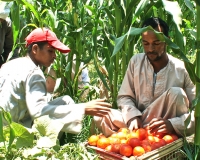

Égypte
Egypt
Capitale Cairo
Population 83 million
Espérance de vie 72.1
L'accès à l'eau potable 98%
L'alphabétisation des adultes 71.4
Mortalité des moins de 5 ans 27.2 per 1,000 live births
PIB par habitant $5,400

-
Fiche d'information du pays
 This Fact Sheet summarizes the key achievements of the Joint Programmes in Egypt.
This Fact Sheet summarizes the key achievements of the Joint Programmes in Egypt.
Egypt Joint Programmes Fact Sheet.pdf (164 KB)
